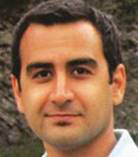 Oscillometric Blood Pressure Estimation: Past, Present, and Future
Oscillometric Blood Pressure Estimation: Past, Present, and Future
Voicu Z. Groza
University of Ottawa, School of Electrical Engineering and Computer Science
 Mohamad Forouzanfar
Mohamad Forouzanfar
Stanford University, Department of Electrical Engineering
ABSTRACT
The use of automated blood pressure (BP) monitoring is growing as it does not require much expertise and can be performed by patients several times a day at home. Oscillometry is one of the most common measurement methods used in automated BP monitors. A large variety of oscillometric algorithms have been developed for accurate estimation of BP. In this tutorial, a comprehensive discussion of the existing oscillometric BP estimation algorithms is presented. The tutorial covers a broad spectrum of algorithms including the conventional maximum amplitude and derivative oscillometry as well as the recently proposed learning algorithms, model-based algorithms, and algorithms that are based on analysis of pulse morphology and pulse transit time. The diverse underlying algorithms will be classified, each algorithm will be briefly described, and their advantages and disadvantages will be discussed. This tutorial will also present the artifact removal techniques in oscillometry and the current standards for the automated BP monitors.
SPEAKER BIOGRAPHY (Voicu Z. Groza)
Voicu Groza received the Dipl.Eng. degree in computer engineering and Dr.Eng. degree in electrical engineering from the Polytechnic Institute of Timisoara, Romania, in 1972 and 1985, respectively. He joined the University of Ottawa, Canada, in 1996, where he is a Full Professor and Associate-Director with the School of Electrical Engineering and Computer Science. Prior to this, he was a Professor and Dean, Faculty of Computers and Automation, at the Polytechnic University of Timisoara. He has published more than 300 technical papers and received five patents. His research interests include biomedical measurements and high speed data acquisition systems.
Dr. Groza has held leadership roles on the organization and technical program committees of numerous international conferences, such as IEEE International Symposium on Medical Measurement &Applications (MeMeA 2008-2016), IEEE International Symposium on Intelligent Signal Processing (WISP 2009-2015) and IEEE International Conference on Instrumentation &Measurement (I2MTC). He has been volunteering in the frame of the IEEE Instrumentation and Measurement Society at the Ottawa chapter. Currently he is chair of the IEEE Working Group on Standard for Objective Measurement of Systemic Arterial Blood Pressure.
Dr. Groza is a Fellow of the IEEE and a Fellow of the Engineering Institute of Canada.
SPEAKER BIOGRAPHY (Mohamad Forouzanfar)
Mohamad Forouzanfar received the Ph.D. degree in electrical and computer engineering from the University of Ottawa, Canada, in 2014. He was a post-doctoral research fellow at the Harvard School of Engineering and Applied Sciences in 2015. He is currently a post-doctoral research fellow in the department of electrical engineering at Stanford University. His current research interests include signal processing, machine learning, and biomedical instrumentation and measurement.
